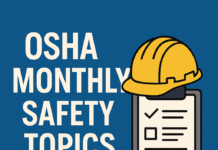
What are types of OSHA violations?
In workplaces across the United States, ensuring safety and compliance with regulations is paramount. The Occupational Safety and Health Administration (OSHA) plays a pivotal role in maintaining workplace safety standards. Understanding the types of OSHA violations is essential for employers and employees alike to uphold safety protocols and avoid penalties.
Introduction
A Brief Overview of OSHA
OSHA, established in 1970, is a federal agency under the United States Department of Labor. Its primary mission is to ensure safe and healthful working conditions for employees by enforcing standards and regulations. OSHA covers most private sector employers and their workers, as well as some public sector employers and workers.
Importance of OSHA Compliance
Compliance with OSHA standards is crucial for several reasons. It helps prevent workplace injuries, illnesses, and fatalities, thereby safeguarding the well-being of employees. Moreover, adherence to OSHA regulations fosters productivity and reduces financial losses resulting from accidents and legal penalties.
Types of OSHA Violations
Violations of OSHA standards can vary in severity and consequences. Here are the main types of OSHA violations:
Serious Violations
Serious violations are those that pose a substantial probability of death or serious physical harm to employees. Examples include failure to provide fall protection, inadequate machine guarding, and electrical hazards.
Other-than-Serious Violations
These violations are not considered serious but still impact workplace safety and health. They may include record-keeping deficiencies, inadequate signage, or failure to maintain fire exits.
Willful Violations
Willful violations are committed with intentional disregard for, or plain indifference to, OSHA regulations. This category involves situations where employers are aware of hazardous conditions but choose not to address them. Penalties for willful violations are the most severe.
Repeat Violations
Repeat violations occur when an employer has been cited for the same or a substantially similar violation within a specified timeframe. OSHA imposes escalated penalties for repeat offenses to encourage compliance.
Failure to Abate Prior Violations
If an employer fails to correct previously cited violations within the specified timeframe, they may face penalties for failure to abate. This category underscores the importance of promptly addressing identified hazards.
Understanding Serious Violations
Definition and Examples
Serious violations involve hazards that could cause significant harm or death if not addressed. Examples include failure to provide personal protective equipment (PPE), unsafe scaffolding, and exposure to toxic substances without proper controls.
Potential Consequences
Employers cited for serious violations may face fines and mandatory corrective actions. Failure to address serious violations promptly can lead to increased penalties and heightened scrutiny from OSHA inspectors.
Explaining Other-than-Serious Violations
Characteristics and Examples
Other-than-serious violations may not directly result in severe injuries, but they still impact workplace safety. Examples include inadequate housekeeping, failure to maintain safety equipment, and improper storage of hazardous materials.
Impact on Workplace Safety
While individually less severe, other-than-serious violations can contribute to an unsafe work environment if left unaddressed. Employers must prioritize correcting these violations to prevent accidents and injuries.
Delving into Willful Violations
Definition and Key Features
Willful violations occur when employers knowingly disregard safety regulations. This category encompasses situations where hazards are deliberately ignored or safety protocols are intentionally bypassed for expedience or cost savings.
Legal Implications and Penalties
Willful violations carry the most severe penalties under OSHA regulations. Fines for willful violations can be substantial, and employers may also face criminal charges in cases of egregious disregard for employee safety.
Repeat Violations: What You Need to Know
Definition and Instances
Repeat violations occur when an employer commits the same or similar violations within a specified timeframe, typically within the previous five years. OSHA closely monitors repeat offenders and imposes escalating penalties for subsequent violations.
Escalating Penalties
Penalties for repeat violations increase with each subsequent offense. Employers may face financial penalties, increased scrutiny from regulatory agencies, and potential legal action for persistent non-compliance.
Failure to Abate Prior Violations
Definition and Significance
Failure to abate violations occurs when an employer fails to correct previously cited hazards within the allotted timeframe. This failure underscores a lack of commitment to employee safety and may result in heightened penalties and enforcement actions.
Consequences for Non-Compliance
Employers who fail to abate violations face additional penalties and enforcement measures. Continued non-compliance can lead to increased fines, business disruptions, and reputational damage.
Preventing OSHA Violations
Importance of Workplace Safety Culture
Establishing a culture of safety is essential for preventing OSHA violations. Employers should prioritize employee training, hazard identification, and proactive safety measures to create a safe work environment.
Regular Inspections and Training
Routine inspections and employee training are critical for identifying hazards and addressing them promptly. Employers should conduct regular safety audits and provide comprehensive training on OSHA regulations and best practices.
Prompt Correction of Identified Hazards
Addressing identified hazards promptly is key to preventing accidents and OSHA violations. Employers should have protocols in place for reporting and correcting hazards to ensure a safe and compliant workplace.
OSHA violations are classified into several categories based on their severity and the level of risk they pose to workers' health and safety. Here are the main types:Serious Violations: These are violations where the workplace hazard could cause an accident or illness that would most likely result in death or serious physical harm unless the employer didn’t know or couldn’t have known of the violation.
Other-Than-Serious Violations: These violations have a direct relationship to job safety and health, but they are unlikely to cause death or serious physical harm. They may include inadequate record-keeping or failure to post required notices.
Willful Violations: These are violations where the employer either knowingly failed to comply with a legal requirement or acted with plain indifference to employee safety.
Repeated Violations: These are violations that are the same or similar to previous violations that have been cited by OSHA.
Failure to Abate Prior Violation: This occurs when an employer fails to correct a previously cited violation within the required timeframe.
Understanding these categories can help employers prioritize and address safety concerns in the workplace to ensure compliance with OSHA regulations.Conclusion
In conclusion, understanding the types of OSHA violations is vital for maintaining workplace safety and compliance. Serious, willful, repeat, and other violations can have significant consequences for employers, including fines, legal penalties, and reputational damage. By prioritizing safety culture, regular inspections, and prompt corrective actions, employers can mitigate risks and ensure a safe working environment for all employees.
OSHA Exam Questions and Answers
List of OSHA Standards for Safety
FAQs
1. How does OSHA define a serious violation?
OSHA defines a serious violation as one that poses a substantial probability of death or serious physical harm to employees.
2. What are the penalties for willful violations?
Willful violations carry the most severe penalties under OSHA regulations, including substantial fines and potential criminal charges.
3. How does OSHA determine if a violation is repeat?
OSHA considers a violation to be repeat if it is the same or substantially similar to a previous violation within a specified timeframe, typically within the previous five years.
4. What are the consequences of failure to abate violations?
Employers who fail to correct previously cited violations within the specified timeframe may face increased penalties, enforcement actions, and reputational damage.
5. How can employers prevent OSHA violations?
Employers can prevent OSHA violations by prioritizing safety culture, conducting regular inspections, providing comprehensive training, and promptly addressing identified hazards.
























